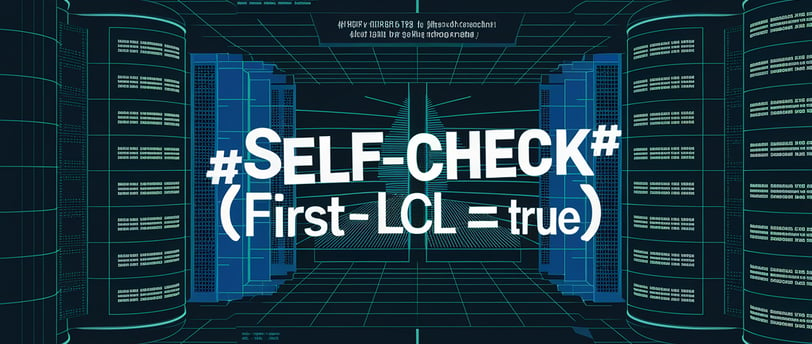Creating the First LLM Control Language (LCL) and How I Made Large Language Models More Reliable
PERSONAVISE CONTROL SYSTEMSPROMPT ENGINEERING INNOVATIONSAI - LLM - NLP - INNOVATION
Personavise.ai
2/20/2025
I Learned the Dangerous Truth About LLMs
The first time I relied on a large language model (LLM) for a critical task, I thought I had found a super powered assistant. I needed it to extract financial data, validate the numbers, and format everything neatly in JSON. Simple, right?
Wrong!
---
The result looked perfect, until I checked. Revenue figures were wrong. Profit margins were fabricated. Missing data? The LLM just made it up. That was my wake-up call: LLMs are brilliant, but they’re not infallible. Worse, they don’t know when they’re wrong.
If you work in fields like finance, legal services, or healthcare, where accuracy is non-negotiable, trusting an LLM blindly can lead to disaster. That’s why I turned to LLM Control Language (LCL) - a system that fundamentally changed the way I interact with AI.
Why LLMs Fail And Why It Matters
Before we get into the solution, let’s break down the problem. Most LLM users face three recurring issues:
1. Hallucinations
LLMs sometimes invent data when they don’t know the answer. This isn’t a bug; it’s part of how they work. They’re designed to predict the “most likely” text—not to fact-check.
2. Inconsistent Output
Sometimes you ask for data in JSON format and get a well-written essay instead. Other times, the model skips fields or mixes up the structure.
3. Guessing When Unsure
LLMs don’t naturally say, “I don’t know.” When uncertain, they often fill in the gaps with plausible but false information. This is especially dangerous when handling financial reports, legal documents, or medical records.
According to a 2024 Enterprise AI Survey by VentureBeat, 78% of companies cited LLM inaccuracy as their top concern when adopting AI-driven workflows (Source).
..
Introducing LLM Control Language (LCL)
When I discovered LLM Control Language (LCL), it felt like giving my AI assistant a checklist and a set of rules—turning it from an overconfident intern into a careful junior analyst.What is LCL?
LCL is a directive-based prompt system designed to reduce errors and ensure predictable, structured outputs. Instead of asking vaguely:
“Extract revenue and profit from this report.”
You use LCL-style instructions:
##GOAL## Extract revenue and profit.
-> Extract revenue.
-> Extract profit.
##OUTPUT_JSON##
These symbols (##, ->) act as control commands, forcing the LLM to break tasks into steps and produce structured, verifiable outputs.
How LCL Works in Practice
Here’s an example that completely changed my experience:
Problem: Missing Data
Without LCL:
The LLM might fabricate a profit figure if it’s not in the source document.
With LCL:
##MISSING_DATA## { "profit" }
Instead of inventing a number, the model flags it:
{ "profit": "MISSING" }
Problem: Mathematical Validation
Without LCL:
The LLM might say: “Revenue is $3M; expenses are $2M; profit is $1.5M.” (See the error?)
With LCL:
##SELF_CHECK## { "Does revenue - expenses equal profit?" }
The model double-checks and returns:
“Revenue is $3M, expenses are $2M, so profit should be $1M. If extracted profit differs, there’s likely an error.”
This shift—from blind confidence to self-auditing was game-changing.
The Real-World Impact of LCL
I wasn’t alone. PwC UK began using GPT-powered AI for audits in 2023, but their success hinged on building internal validation steps like LCL to prevent financial reporting errors (Source).
Similarly, companies like Microsoft and OpenAI have published AI prompt engineering guidelines focused on ensuring AI outputs are both accurate and auditable:
Example of LCL Directives That Transformed My AI
After testing LLM Control Language (LCL) across dozens of projects, I’ve built a toolkit of go-to directives. Here’s what I use every day:
(I created a library for Personavise NLP Control Language which contains 810 NLP Directives)
1. ##OUTPUT_JSON##
Purpose:
Forces the LLM to return data in JSON format, making it easier for software systems to parse.
Example:
##GOAL## Extract revenue and expenses.
-> Extract revenue.
-> Extract expenses.
##OUTPUT_JSON##
Output Example:
{
"revenue": "$3M",
"expenses": "$2M"
}
2. ##MISSING_DATA## { FIELD }
Purpose:
Prevents hallucinated values. If a field is missing, the model flags it.
Example:
##MISSING_DATA## { "profit" }
Output Example:
{
"profit": "MISSING"
}3. ##SELF_CHECK## { QUERY }
Purpose:
Prompts the LLM to validate its own output logically.
Example:
##SELF_CHECK## { "Does revenue - expenses equal profit?" }
Output Example:
“Revenue is $4M, expenses are $3M, so profit should be $1M.”
4. ##CLARIFICATION_NEEDED## { QUESTION, CONTEXT_DUMP }
Purpose:
When the model is unsure, it asks for clarification instead of guessing.
Example:
##CLARIFICATION_NEEDED## { "What currency is this report in?", "Display the source data snippet." }
5. ##MARK_UNCERTAIN## { TEXT }
Purpose:
Flags sections where the model lacks confidence.
Example:
##MARK_UNCERTAIN## { "Revenue figure seems inconsistent with other data." }
Implementing LCL in Your Business
I started using LCL primarily in financial reporting, but its benefits extend to legal compliance checks, customer support automation, and medical data processing.
Key Sectors That Will See Innovative Results
Finance: Extracting accurate earnings data without hallucinations.
Legal: Checking clause consistency across contracts.
Healthcare: Validating medical billing codes.
Common Pitfalls (And How to Avoid Them)
✅ Overuse of Directives: Too many can slow down the LLM’s performance. Use them strategically
✅ Context Loss: Keep context windows in mind; directive-heavy prompts can crowd out critical details.
The Future of LCL and LLM Reliability
While LCL has revolutionized my work, it’s not perfect. Businesses adopting LCL report two common challenges:
Latency: Complex directives can increase response times.
Rigidity: Over-structured outputs can reduce flexibility in creative or nuanced tasks.
The Road Ahead
Hybrid Approaches: Combining LCL precision with freeform language generation.
Performance Optimization: AI platforms are optimizing LCL-style processing to reduce slowdowns.
Why LCL Matters More Than Ever
As companies scale AI automation, the question shifts from: “Can we automate this?” “Can we automate this safely?”


